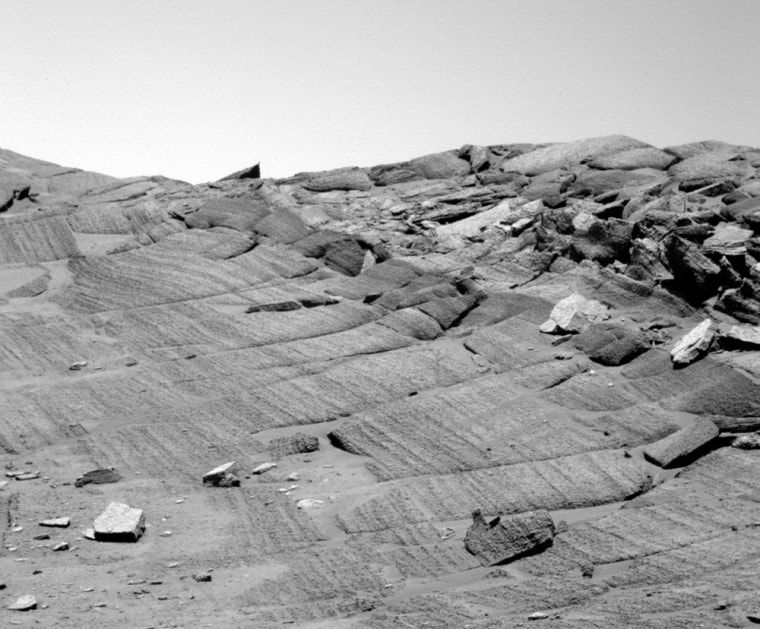As NASA's Mars rovers keep rolling past all expectations of their useful lives, scientists have a happy mystery: For some reason one of the vehicles has actually gained power recently.
Opportunity recently experienced an unexplained rejuvenation from what can so far be described only as two or three significant "cleaning events," said Jim Erickson, the rover project manager at NASA's Jet Propulsion Laboratory in Pasadena.
"Now we're assuming they're cleaning, but all we can really say is that overnight the solar panels produced between 2 and 5 percent additional power immediately," he said. "We're surmising that for some reason dust is being removed from the solar panel and that's increasing the efficiency of the sunlight being converted to electricity."
The rover team has been bandying about theories, but hasn't figured out the cause.
"One favorite is that a dust devil happened to pick the vehicle to go through and go over the surface of it and clean it off a little bit," Erickson said.
Opportunity and its twin, Spirit, parachuted to opposite sides of Mars back in January, but they remain in good shape after enduring the worst of the Martian winter, which cut down on the amount of energy reaching their solar panels.
Both six-wheeled rovers have discovered geologic evidence of past water activity on the Red Planet and are continuing to send valuable data.
Pushing the limits
"We are pushing these vehicles to their very limits," said Steve Squyres, the rover principal investigator from Cornell University in Ithaca, N.Y. "In many ways they are performing better in some sense just because we've gotten better at operating them and we are in this much more challenging and geologically rich terrain."
Spirit has had several minor problems, indicating that various parts may be showing their age, Erickson said.
Spirit, having trekked nearly two miles across the flat terrain of the vast Gusev Crater region where it set down, is zigzagging up the rugged Columbia Hills and is now nearly 200 feet above the surrounding plain.
The intriguing layered rocks of the hills are much different than the plain below, and scientists are working on multiple hypotheses to explain how they formed.
The leading theory is that the rocks began as volcanic ash that fell out of the sky or moved along the ground in ash flows, and minerals inside them were subsequently altered by ground water, said Ray Arvidson, the rover deputy principal investigator from Washington University in St. Louis, Mo.
Opportunity is nearing the end of its exploration of stadium-size Endurance Crater in the Meridiani Planum region and may claw its way over the rim.
The rovers had available about 1,000 watt-hours a day when they arrived on Mars, but dust on their solar panels and the seasonal decrease in solar energy have limited their power, and therefore their activities.
Opportunity is now at about 820 watt-hours and remains very close to full capability. Spirit, which is in a less advantageous position to point its arrays toward the sun, has 350 to 400 watt-hours daily.
